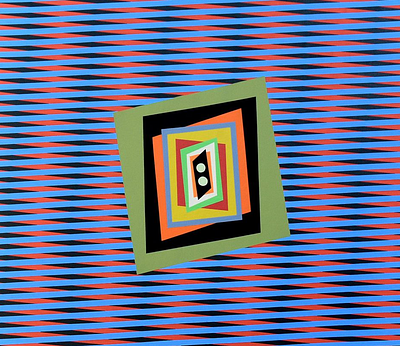DAMIEN HIRST (Bristol, UK, 1965). "Skull", 2009. Acrylic on paper (Spin Painting).
Lot 139
About Seller
Setdart Auction House
Carrer Aragó 346
Barcelona
Spain
Setdart Subastas was born in 2004 and is currently the first online art auction in Spain with solidity, prestige and reliability guaranteed by our more than 60,000 users. Setdart has a young, dynamic and enterprising team ready to successfully manage the purchase and sale of art works through custom...Read more
Estimate:
EUR€4,000 - EUR€5,000
$4,210.53 - $5,263.16
Absentee vs Live bid
Two ways to bid:
- Leave a max absentee bid and the platform will bid on your behalf up to your maximum bid during the live auction.
- Bid live during the auction and your bids will be submitted real-time to the auctioneer.
Bid Increments
| Price | Bid Increment |
|---|---|
| EUR€0 | EUR€10 |
| EUR€200 | EUR€25 |
| EUR€500 | EUR€50 |
| EUR€1,000 | EUR€100 |
| EUR€3,000 | EUR€200 |
| EUR€5,000 | EUR€500 |
| EUR€10,000 | EUR€1,000 |
| EUR€20,000 | EUR€2,000 |
| EUR€50,000 | EUR€5,000 |
About Auction
By Setdart Auction House
Dec 15, 2021
Set Reminder
2021-12-15 07:00:00
2021-12-15 07:00:00
America/New_York
Bidsquare
Bidsquare : Contemporary and Actual Art
https://www.bidsquare.com/auctions/setdart-auction-house/contemporary-and-actual-art-7967
Setdart Auction House sofia@setdart.com
Setdart Auction House sofia@setdart.com
- Lot Description
DAMIEN HIRST (Bristol, UK, 1965). "Skull", 2009. Acrylic on paper (Spin Painting). Collaborative work, made on April 24, 2009, on the occasion of the opening of the exhibition ""Requiem"" at the Pinchuk Art Centre in Kiev. Signed on the back with wet stamp of the artist and with dry stamp. Measurements: 73 x 54 cm. This work was conceived for the exhibition ""Requiem"", held at the PinchukArtCentre, Kiev, Ukraine, in 2009. The exhibition included over 100 works by the artist, such as 'A Thousand Years' (1990), 'With Dead Head' (1991) and 'Loving in a World of Desire' (1996), 'Requiem' presented the first exhibition of works from Hirst's series of oil paintings on canvas, which had begun in 2006. Two recurring elements in Hirst's work are evident in this work, the spin painting technique, and the presence of the skull. Death is the central theme of his work, which is why his work has always been surrounded by great controversy. He is best known for his Natural History series, in which dead animals are preserved, sometimes dissected, in formaldehyde. He is also known for his ""spin paintings"", such as the one shown here, made on a rotating circular surface. Damien Hirst was born in Bristol on June 7, 1965, in a suburban environment with economic problems. He never knew his biological father and his mother married a car salesman, who left them when Hirst was 13. His mother, an amateur artist and devout Christian, took care of him, but because of his father's abandonment he had to be educated from the bottom up, which is perhaps the main reason why Damien Hirst argues that art is classless. He trained at the University of Leed while combining his studies with a job at the local mortuary, which he later abandoned to move to London. During this time he was working in construction and in turn applying to various art schools such as St Martins, or the faculty of Wales. He was finally accepted at Golsdmiths College, which at the time, due to the economic recession in England, was a school that attracted bright students and creative tutors. While studying, Hirst financed his expenses by working on telephone surveys, a direct cause of his ability to fake any emotion over the phone. During his studies he also worked at McDonald's, and part-time at the Anthony D'Ofray gallery, where he learned the mechanics of the art market. Already in his second year of studies, Hirst, acquired the role of artist and curator, and managed to make an exhibition that would change the course of British art, it was his first solo exhibition with only 26 years. Four years later, in 1995, he won his second Turner Prize nomination for Mother and Child. At the age of 32, the Larry Gagosian Gallery offered him a major retrospective, after which he declared that he had no place left to exhibit, he had done it all and too fast. So soon the media baptized him with the name Hooligan Genius. Although he became a millionaire at the age of 40, Hirst's hypersensitivity became suspicious; wrapped in an aura of romanticism, he made revolutionizing the art world seem simple. On several occasions he has acknowledged his desire to be famous and in the face of criticism he has defended himself with phrases such as ""they could not admit to themselves that they wanted to be famous and resented not being famous"" or ""I think my desire was to be more famous than rich, I think the desire to create art and be famous is like the desire to live forever two obsessions: death and celebrity"". Damien Hirst has works in the MoMA in New York, the Tate Gallery and the Victoria & Albert Museum in London, the Palazzo Gras in Venice, the Kunstmuseum Wolfsburg (Germany), the Hirshhorn in Washington D.C. and the Neu Galerie in Graz (Austria), among other important public and private collections."
- Shipping Info
-
In-house shipping available. Please inquire at admin@setdart.com.
-
- Buyer's Premium



 EUR
EUR CAD
CAD AUD
AUD GBP
GBP MXN
MXN HKD
HKD CNY
CNY MYR
MYR SEK
SEK SGD
SGD CHF
CHF THB
THB













